News
July 10, 2025
Our summer student Aaron is busy with his experiments! Aaron has joined two project teams for great learning and research opportunities, using two novel techniques in our lab - electrospinning and 3D printing for fabricating microstructure-controlled advanced materials!

June 22-25, 2025
Thanks to Mojtaba Ebrahimian Mashhadi for presenting our work “Biocompatible Interfacial Solar Evaporator for Seawater Desalination and Mineral Recovery” at the 99th ACS Colloids & Surface Science Symposium & 18th IACIS Conference held at the University of Alberta! The work highlights a sustainable approach to clean water generation and salt harvesting. Great opportunity to communicate and learn from the experts in the colloids and surface science!
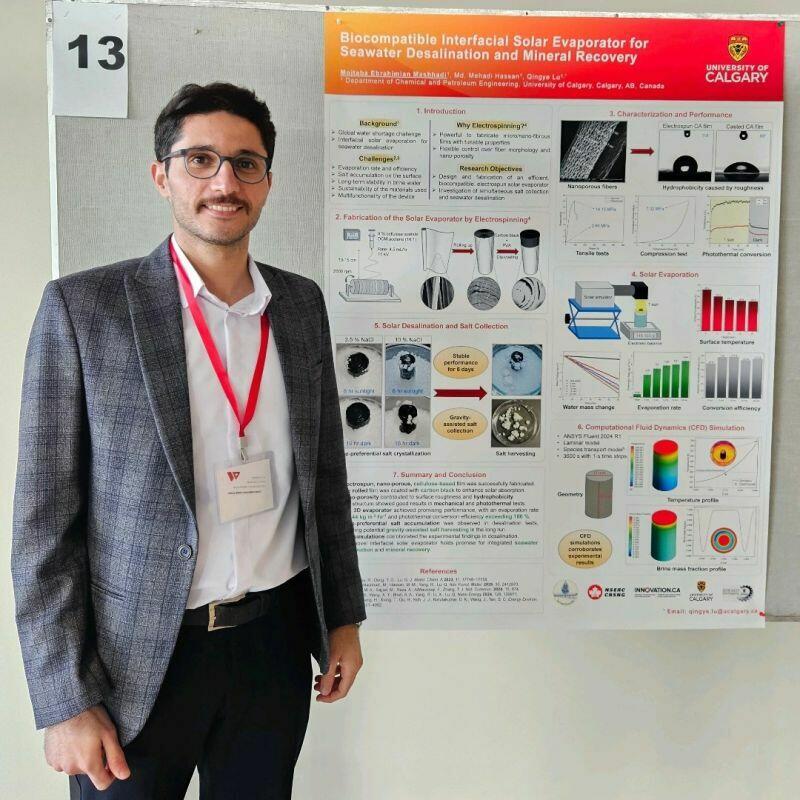
May 18-22, 2025
Excited to attend the 247th ECS meeting in Montreal, Canada! Great opportunity to learn the progress in the field and communicate with experts and colleagues! Thanks to Brett Conners for presenting our work "Electrospun solid-state electrolyte from cellulose acetate and bentonite clay for sodium-ion batteries" and "Electrospinning and solution-casting assisted aligned nanocomposite solid electrolyte based on cellulose acetate and chitosan biopolymers for sodium-ion batteries"!

May 14-15, 2025
Happy to give a talk to researchers, energy regulators, and industries on work "Interfacial Solar Evaporation for Freshwater Generation from High Saline Wastewater" on the 6h Annual Canadian Shale Water Show, May 14-15, 2025, Calgary (Canadian Shale Water Show 2025). Great opportunities to learn the challenges and status of shale water management and network with researchers, energy regulators and industries!

May 6, 2025
Honoured to be promoted to Professor, Research and Teaching (effective July 1st, 2025). Thanks to all who support this!
May 05, 2025
Welcome our new summer intern Aaron Arellano to the group! Wish him a productive and enjoyable stay in the group!
Apr 25, 2025
Honoured to give a talk at the University of British Columbia (UBC) Bioproducts Institute at Vancouver on "Biopolymer-base Hybrid Materials: Innovations by Introducing Biomimetic Strategies and Molecular Interactions". Thanks a lot to the host from Prof. Orlando Rojas! Great chance to meet and learn and discuss potential collaborations!

April 7-11, 2025
Honored to give an invited talk "Nanostructured Biopolymer-Based Electrolyte Membrane for Solid-State Lithium-Ion and Sodium-Ion Battery" at the EN01 symposium: Lithium-Ion Batteries and Beyond at the Materials Research Society (MRS) Spring Meeting and Exhibit at Seattle, WA, USA! Excited to meet and learn from so many great experts in the field!

April 1st
Congratulations to the capstone design team in chemical engineering supervised by me - EcoTexStyle Team on "Biodegradable Polyester Production" for winning the Silver medal at the U of Calgary Engineering Capstone Design Fair on April 1st! Well done, girls!
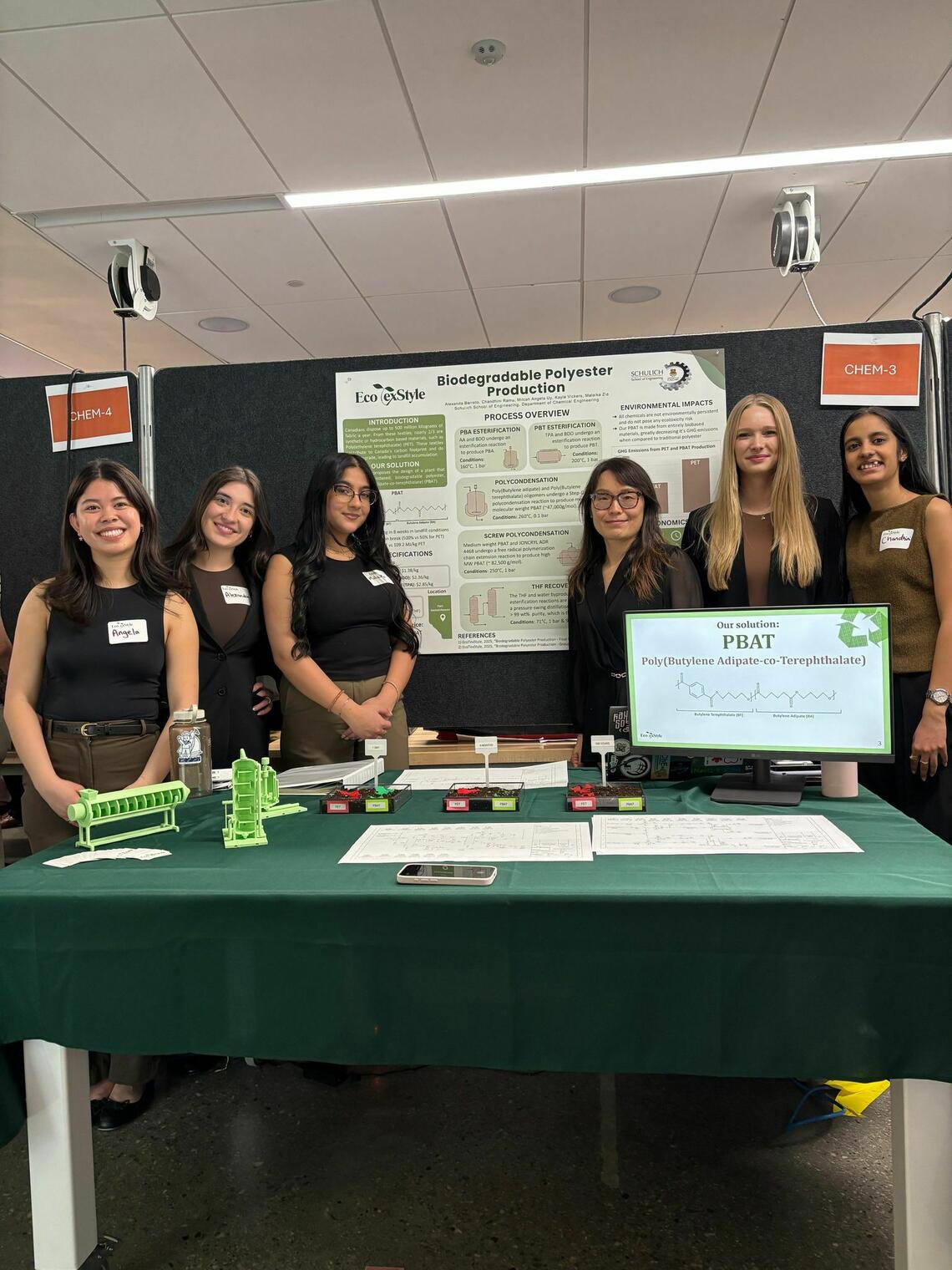

Mar 21, 2025
Invited for the oral talk "Cellulose Biopolymer-based Flexible Nanofibrous Composite Solid Polymer Electrolyte for Next Generation Sodium-ion Batteries" for the Volt-age Annual Conference 2025 in Montreal. A great opportunity to network with experts in the field.

Mar 06, 2025
Congratulations to Amber, Mojtaba, and Ruijie for winning the 2025 Graduate Excellence Award in the Department of Chemical and Petroleum Engineering.
February 20, 2025
A great honour to be awarded with Schulich Research Excellence Award.
Feb 11, 2025
Congratulations to Mojtaba Ebrahimian Mashhadi for winning Alberta Graduate Excellence Scholarship (AGES) - International effective from Jan 01, 2025.
Oct 28-30, 2024
Thanks to Mehadi Hassan and Brett Conners for attending the 15th International Conference on Advanced Lithium Batteries for Automobile Application (ABAA-15) in Montreal, Canada to present our work on electrospun cellulose composite electrolytes.
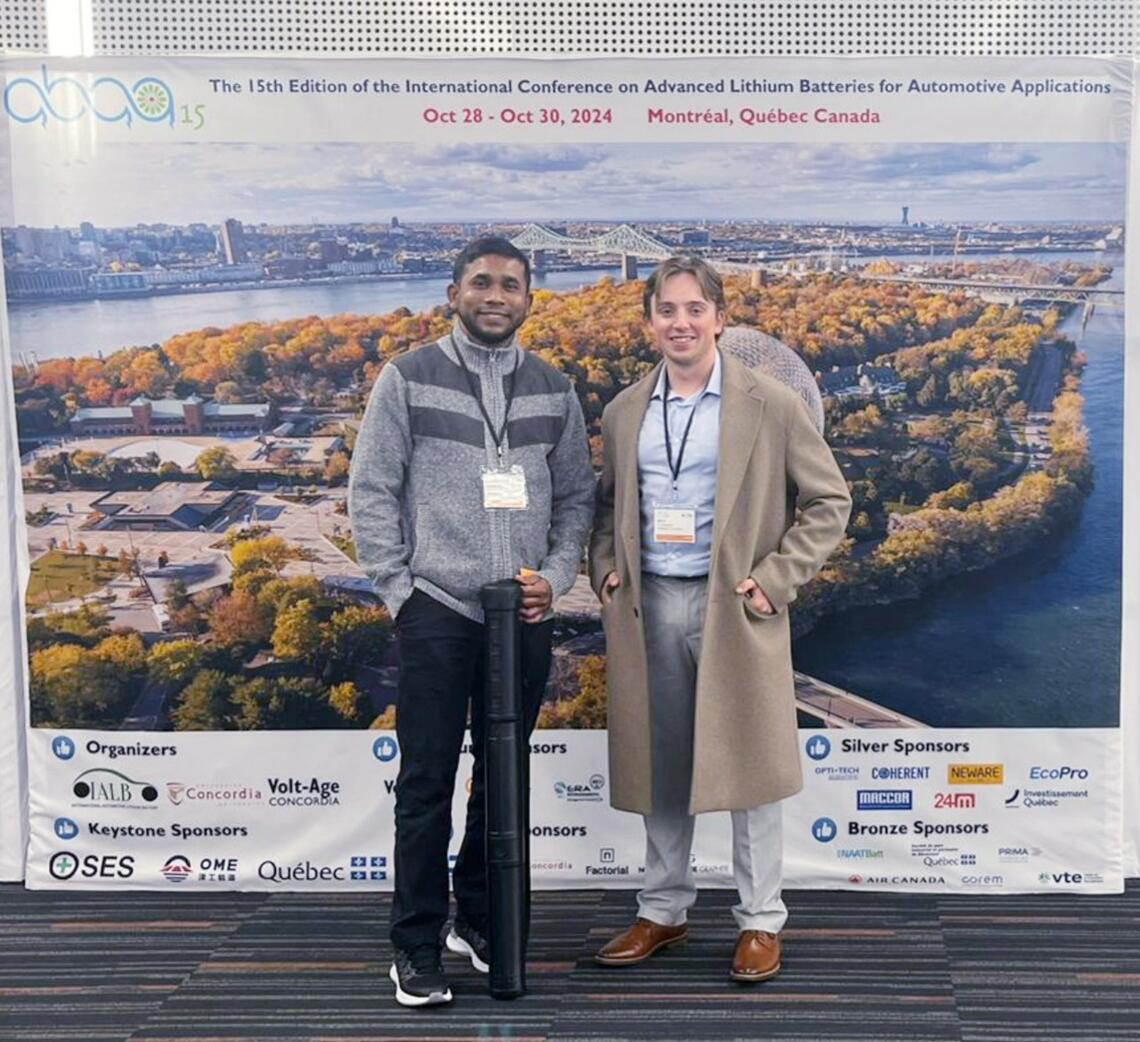

Sept 1, 2024
Congratulations to Mojtaba Mashahdi and co-authors for publishing (All‐in‐One Hybrid Solar‐Driven Interfacial Evaporators for Cogeneration of Clean Water and Electricity - Ebrahimian Mashhadi - Advanced Functional Materials - Wiley Online Library).

Aug, 2024
Our summer interns Lillian and Zaki are working hard on their projects in the lab.


Aug, 2024
Excited to visit Massachusetts Institute of Technology (MIT), and also attend the Annual 2024 “MIT A+B” Applied Energy Symposium and present our work "Nanostructure Control of Biopolymer-based Electrolyte Membrane for Solid-State Lithium-ion and Sodium-ion Battery". Great opportunity to learn and communicate!
July 31, 2024
Congratulations to Mehadi Hassan for defending his PhD thesis work "Controlling nanoarchitecture of biopolymer-based flexible electrolyte membranes for solid-state lithium-ion and sodium-ion battery"!
Congratulations to Cassie Ren for defending her PhD thesis work "Cellulose-based nanocomposite aerogel/hydrogel materials for wastewater purification and freshwater generation by interfacial solar evaporation"!


July 06, 2024
Congratulations to Mehadi Hassan and co-authors for publishing "Composite scaffold of electrospun nano-porous cellulose acetate membrane casted with chitosan for flexible solid-state sodium-ion batteries" on Nano Energy (https://doi.org/10.1016/j.nanoen.2024.109971).
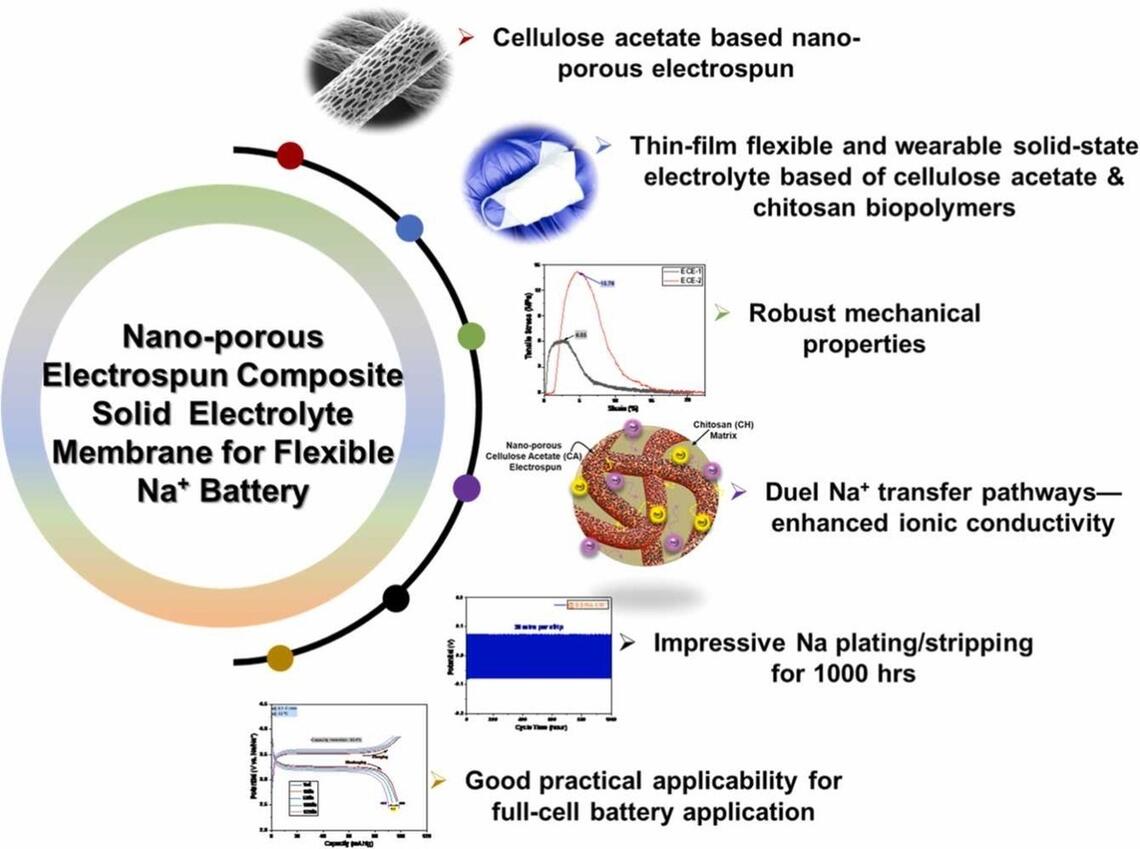
June 01, 2024
Welcome Lillian join the group for summer research work. Wish her a wonderful summer in the group!
May 26-30, 2024
Excited to attend the 245th ECS meeting at San Francisco to interact and learn from the large ECS community. Thanks to Mehadi Hassan for presenting the work "Electrospun Nanoporous Cellulose Acetate Membrane Casted with Chitosan for Solid-state Sodium-ion Batteries".


May 16, 2024
Congratulations to Ruijie Yang and co-authors on publishing the paper titled as "Intercalation in 2D materials and in-situ studies" on Nature Reviews Chemistry, 2024 (Front Outside Cover).
Abstract: Intercalation of atoms, ions and molecules is a powerful tool for altering or tuning the properties — interlayer interactions, in-plane bonding configurations, Fermi-level energies, electronic band structures and spin–orbit coupling — of 2D materials. Intercalation can induce property changes in materials related to photonics, electronics, optoelectronics, thermoelectricity, magnetism, catalysis and energy storage, unlocking or improving the potential of 2D materials in present and future applications. In situ imaging and spectroscopy technologies are used to visualize and trace intercalation processes. These techniques provide the opportunity for deciphering important and often elusive intercalation dynamics, chemomechanics and mechanisms, such as the intercalation pathways, reversibility, uniformity and speed. In this Review, we discuss intercalation in 2D materials, beginning with a brief introduction of the intercalation strategies, then we look into the atomic and intrinsic effects of intercalation, followed by an overview of their in situ studies, and finally provide our outlook.


May 05, 2024
Welcome Zaki join the group for summer research work. Wish him a wonderful summer in the group!
May 09, 2024
Congratulations to Ruijie Yang and co-authors on publishing article "Highly Dispersed Ni Atoms and O3 Promote Room-Temperature Catalytic Oxidation" on ACS Nano, 2024 (Outside Cover).
Abstract: Transition metal oxides are promising catalysts for catalytic oxidation reactions but are hampered by low room-temperature activities. Such low activities are normally caused by sparse reactive sites and insufficient capacity for molecular oxygen (O2) activation. Here, we present a dual-stimulation strategy to tackle these two issues. Specifically, we import highly dispersed nickel (Ni) atoms onto MnO2 to enrich its oxygen vacancies (reactive sites). Then, we use molecular ozone (O3) with a lower activation energy as an oxidant instead of molecular O2. With such dual stimulations, the constructed O3–Ni/MnO2 catalytic system shows boosted room-temperature activity for toluene oxidation with a toluene conversion of up to 98%, compared with the O3–MnO2 (Ni-free) system with only 50% conversion and the inactive O2–Ni/MnO2 (O3-free) system. This leap realizes efficient room-temperature catalytic oxidation of transition metal oxides, which is constantly pursued but has always been difficult to truly achieve.
Apr 09, 2024
Our research program related to interfacial solar evaporation for freshwater production and energy generation receives the fund support from the Natural Sciences and Engineering Research Council of Canada (NSERC) discovery grants program for 5 years.
April 04, 2024
Excited to attend the U of Calgary Engineering Capstone Design Fair! So proud of the GLIXO team supervised for showcasing their work "Synthesis of an HPMC-g-PEA Hydrogel for Chronic Wound and Burn Care Applications" on the fair! Well done, girls!

Apr 01, 2024
Our collaborative project led by Dr. Yang "Unlocking the power of mRNA for rare neurodevelopment disorders" receives a Branch Award in the inaugural One Child Every Child Strategic Catalyst Award competition! Look forward to our work in applying hydrogels and emulsions into the challenging field.
Mar 08, 2024
Congratulations to MD Mehadi Hassan, Cassie Ren, Mojtaba Ebrahimian Mashhadi, Amber Chen, Ruijie Yang for winning the 2024 graduate excellence award in CPE.
Feb 06, 2024
Our research project for next-generation of sodium ion batteries has been awarded seed grant funding by @Volt-Age at @Concordia University under the @CFREF program (Volt-Age, visit https://www.concordia.ca/research/volt-age.html).
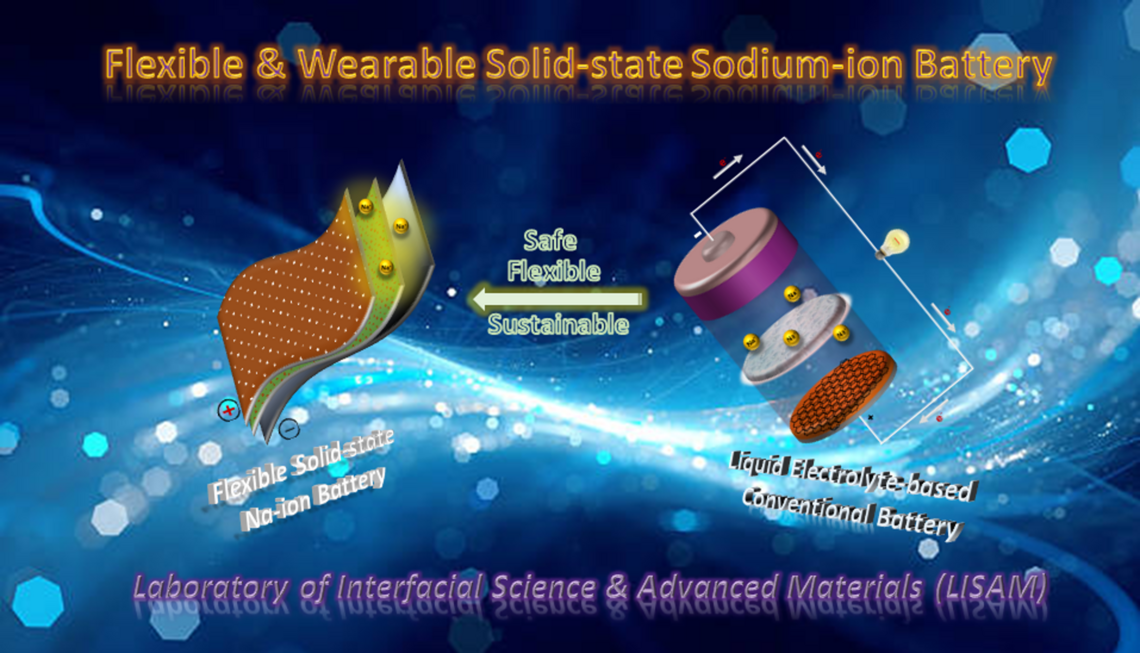
Jan 06, 2024
Congratulations to Xiao and co-authors for publishing the review article "A Review of High Internal Phase Pickering Emulsions: Stabilization, Rheology, and 3D Printing Application" (CIS_103086) on Advances on Colloid and Interface Science.

Dec 21, 2023
Congratulations to Amber and co-authors for publishing the work "An Adhesive Cellulose Nanocrystal-Reinforced Nanocomposite Hydrogel Electrolyte for Supercapacitor Applications" (GIANT_100230) on Giant (Special Issue on “Hydrogels: from synthesis and properties to functions and applications”).

Dec 10-13, 2023
Dr Lu joined the 15th International Conference and Exhibition on Nutraceuticals and Functional Foods in USA to learn recent work of materials science and colloid science in nutraceuticals, functional foods and drug delivery systems. Our work "Aqueous Condition-Tolerated High Internal Phase Oil-in-Water Pickering Emulsion for 3D Printing Hydrogel for Controlled Release" was given at the conference as an oral talk.
Dec 06, 2023
Congratulations to Ruijie Yang for winning Alberta Innovates Graduate Student (Doctoral) Scholarship for 2023-2025.
Nov 6, 2023
Very excited to post our lab logo - bright happy sunshine vision. It shows our great passion on interfacial science and advanced materials, and strong efforts on innovations into fields such as sustainable energy, environmental engineering and biomedical engineering.

Nov 2, 2023
Congratulations to Rufan Zhou for his successful PhD defense on the thesis "Development of Nanostructured Catalysts for Efficient Syngas Production from Dry Reforming of Methane". And best wishes for his career after PhD graduation!
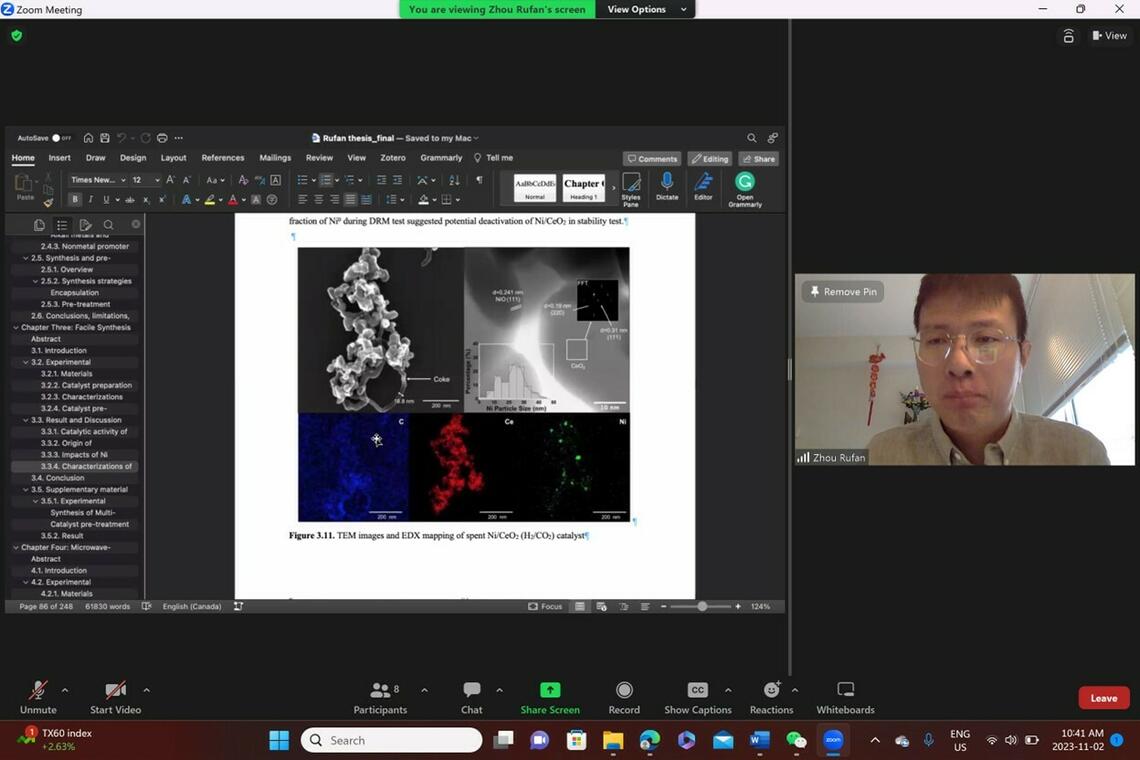
Oct 29 - Nov 1, 2023
Glad to attend the Canadian Chemical Engineering Conference (CSChE) 2023 Calgary and learn from the large research community. Thanks to Amber for giving an oral talk "Highly Stretchable, Repairable, and Tough Nanocomposite Hydrogel Physically Cross-linked by Hydrophobic Interactions and Reinforced Hydrophobized Cellulose Nanocrystals", Cassie for giving an oral talk "A Lightweight, Mechanically Strong, and Shapeable Copper-benzenedicarboxylate/Cellulose Aerogel for Wastewater Treatment", and Mehadi for giving a poster talk "Morphology-dependent Antibacterial Activity of Thymol-loaded Polylactic Acid Nano-porous Electrospun Membrane" at the conference. And Congratulations to Mehadi for winning a poster presentation award at the conference!

Oct 25, 2023
Congratulations to Ruijie Yang and co-authors for publication "Photocatalysis with atomically thin sheets" on Chemical Society Reviews, 2023 (https://pubs.rsc.org/en/content/articlelanding/2023/cs/d2cs00205a).
Abstract: Atomically thin sheets (e.g., graphene and monolayer molybdenum disulfide) are ideal optical and reaction platforms. They provide opportunities for deciphering some important and often elusive photocatalytic phenomena related to electronic band structures and photo-charges. In parallel, in such thin sheets, fine tuning of photocatalytic properties can be achieved. These include atomic-level regulation of electronic band structures and atomic-level steering of charge separation and transfer. Herein, we review the physics and chemistry of electronic band structures and photo-charges, as well as their state-of-the-art characterization techniques, before delving into their atomic-level deciphering and mastery on the platform of atomically thin sheets.
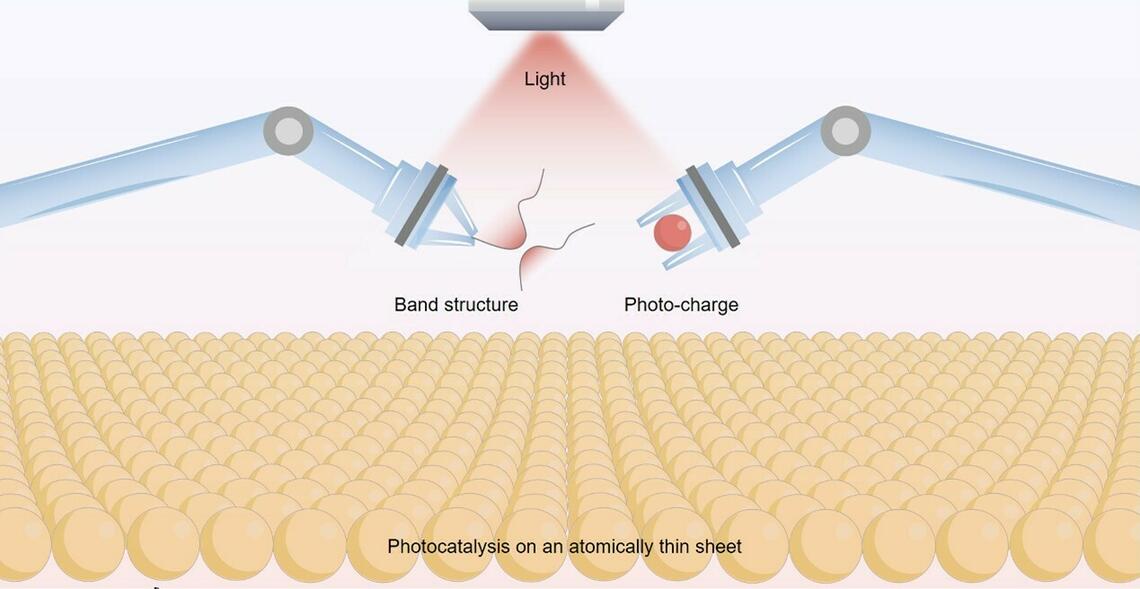
Oct 12-15, 2023
Dr. Lu attended the 7th International Conference of Bionic Engineering & the International Youth Conference of Bionic Science and Engineering 2023 (ICBE & IYCBSE 2023) online to learn exciting progress in the bionic research fields and get connected to international bionic scholars. Our work on "Wood-inspired polypyrrole/cellulose aerogel for efficient interfacial solar evaporation" was presented at the conference as an oral talk.
Sept 18, 2023
Thanks to Dr. T. Dong from Southern University of Science and Technology for giving an excited talk for us on "Engineering of a bacterial protein secretion machine for protein cargo delivery".
Sept 13, 2023
Dr. Lu attended the workshop "Let's Talk Quantum" organized by the Quantum City team at Hunter Hub Collision Space, 4th Floor Hunter Student Commons (HNSC), University of Calgary to have a better understanding of Quantum City - Calgary's new quantum innovation hub, the Quantum City's qLab and its research potential, quantum computing at Mphasis, and have some networking opportunities related to our 2D quantum material project.
Sept 11, 2023
Congratulations to Xiaoyan and Mehadi and co-authors for publication "Thymol-loaded polylactic acid electrospun fibrous membranes with synergistic biocidal and anti-bacterial adhesion properties via morphology control" on Colloids and Surfaces A: Physicochemical and Engineering Aspects, 2023, 677, 132360 (https://authors.elsevier.com/a/1hkkU3IywUPian).
Abstract: Antibiotic resistance is a growing challenge in modern medicine, highlighting the urgent need for alternative antimicrobial strategies. The combination of synergistic sterilization and inhibition of bacterial adhesion presents a promising approach for achieving a long-lasting antibacterial effect. Herein, we report the fabrication of thymol-loaded polylactic acid (Thy-PLA) porous fibrous membranes that exhibit both bacteria-killing and bacteria-repellent functions, accomplished through control of microstructure and morphology during the electrospinning process. Notably, we employed the breath figure method, a humidity-induced morphology control technique, which significantly increased the surface roughness of the Thy-PLA fibers and resulted in a nano-porous structure for bacterial repulsion. Additionally, this method facilitated the enhanced release of thymol, thereby enabling efficient sterilization. By simply modifying the morphology, we achieved bacterial reduction rates of up to 99.92 % and 99.87 % for Escherichia coli and Staphylococcus aureus, respectively, and robust mechanical properties (ultimate tensile stress of 20 MPa and elongation at break of 822.7 %). Furthermore, the fibrous membranes exhibited an impressive oil/water absorption capacity (∼36.7 g/g in 90 s) thanks to the interior and surface porosity. The porous fibrous membranes with synergistic antimicrobial efficiency and tunable mechanical properties demonstrate great potential for diverse applications, particularly in wound dressing and oil/water filtration.
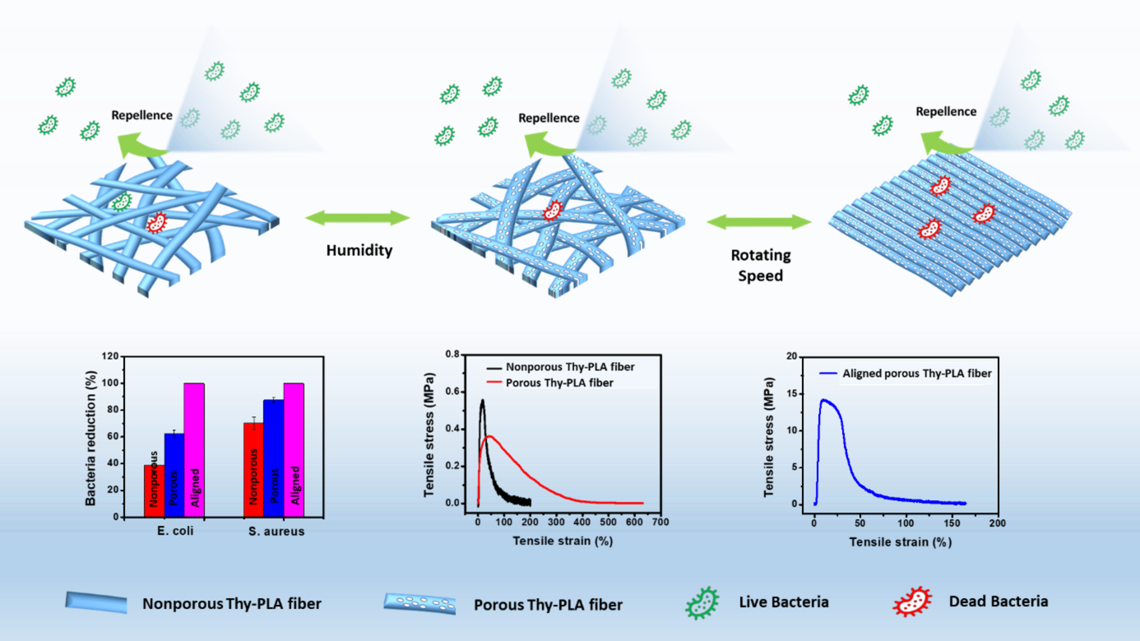
Sept 4, 2023
Check our publication "Blowing-inspired ex situ preparation of ultrathin hydrogel coatings for visibly monitoring humidity and alkaline gas" on Nanoscale (Nanoscale, 2023, 15, 13952 - 13964, outside front cover. http://xlink.rsc.org/?DOI=D3NR02821F or https://pubs.rsc.org/en/journals/journalissues/nr); twitter: Nanoscale journal family @nanoscale_rsc; LISAM Lab Interfacial Science Advanced Materials @Lu_Lab_LISAM).
Just like blowing a soap bubble in people’s childhood, the ultra-thin hydrogel film can be prepared by the blowing method, which shows concentric rings with interference colours for visible sensing.
Abstract: Compared with the in situ preparation of ultrathin hydrogel coatings through successive yet tedious steps, ex situ strategies decouple the steps and greatly enhance the maneuverability and convenience of preparing hydrogel coatings. However, the difficulty in preparing sub-micron-thick coatings limits the applicability of ex situ methods in nanotechnology. Herein, we report the ex situ preparation of centimeter-scale ultrathin hydrogel coatings by applying omnidirectional stretching toward pre-gelated hydrogels with necking behaviors. This process involves blowing a bubble directly from a pre-gelated hydrogel and subsequently transferring the resulting hydrogel bubble to different substrates. The as-fabricated coatings exhibit peak-shaped thickness variations, with the thinnest part as low as ∼5 nm and the thickest part controllable from ∼200 nm to several microns. This method can be universally applied to hydrogels with necking behavior triggered by internal particles with partial hydrophobicity. Due to the overall near- or sub-micron thickness and unique thickness distribution, the coatings present concentric rings of different interference colors. With such an observable optical characteristic, the as-prepared hydrogel coatings are applied as sensors to visibly monitor humidity changes or alkaline gas through the visibly observable expansion or contraction of concentric interferometry rings, which is triggered by adsorbing/desorbing the surrounding water or alkaline molecules and the resultant swelling/deswelling of the coatings, respectively. With the universality of the method, we believe that the ex situ strategy can be used as a simple yet efficient environmental nanotechnology to fabricate various types of nanometer-thick hydrogel coatings as detectors to sensitively and visibly monitor surrounding stimuli on demand.


Aug 30, 2023
Welcome new student Brett Conners to the group! Wish he a wonderful time and great performance in our group!
And Say farewell to our summer students Anton and Billy. They have had great experience in our lab! Wish them the best for their future study, career and life!
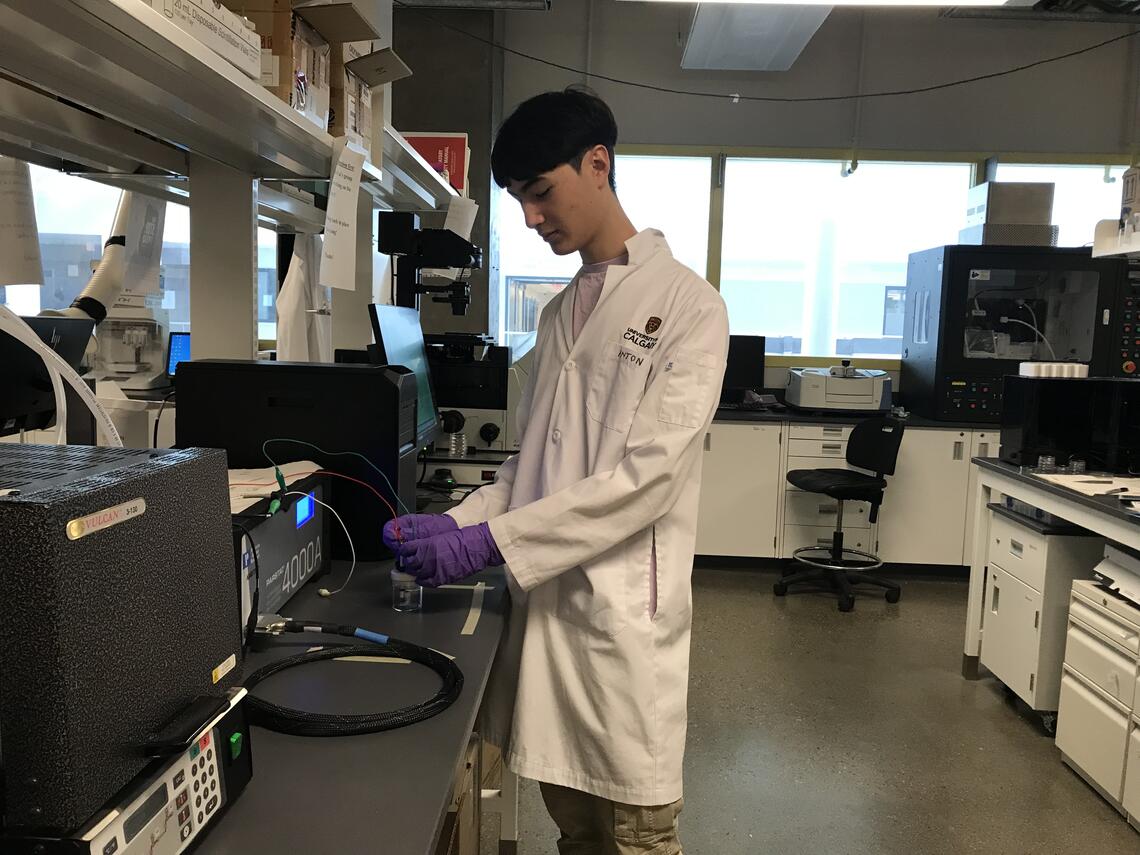

Aug 22, 2023
Congratulations to Cassie and co-authors on the publication of "Wood-inspired Polypyrrole/Cellulose Aerogel with Vertically Aligned Channels Prepared by Facile Freeze-casting for Efficient Interfacial Solar Evaporation" on Journal of Materials Chemistry A, 2023, 11, 17748 - 17758.
Abstract: Interfacial solar evaporation has drawn increasing attention in recent years due to its high efficiency, clean energy source and adaptability to a wide range of water sources. Herein, a solar evaporator was fabricated using a cellulose aerogel (CA) as the support by facile freeze-casting and polypyrrole (PPy) as the solar-thermal-conversion material by in situ growth. The cellulose aerogel showed unique morphology of a porous honeycomb-like structure at cross-section and vertically aligned channels, not only benefiting fast water delivery to the evaporator surface, but also alleviating the salt precipitation problem. With the growth of PPy nanoplates, the composite aerogel exhibited a high evaporation rate (∼3.16 kg m−2 h−1) and energy conversion efficiency (∼90.25%) under one sun illumination and great stability indicated by continuous long-term evaporation in saline water. The interaction between composite aerogels and water molecules could decrease water vaporization enthalpy to around 1400 kJ kg−1 after stabilization, which plays an important role in enhancing evaporation performance. The impact of the cellulose concentration and PPy coverage percentage during preparation, saline concentration, and exposure height of the solar evaporator on evaporation performance was also investigated. Finally, the purified water was collected using a purpose-made collector with a collecting rate of 1.27 ± 0.08 kg m−2 h−1 and the condensed water showed high purity from various water sources. Attributed to its excellent light-harvesting ability, unique structure for fast and sufficient water transport and decreased water vaporization enthalpy, this cellulose-based aerogel shows great potential in clean water production.

Aug 8, 2023
Dr. Lu gave a talk "Materials innovation by learning from Nature: bio-based, bio-derived, bio-mimetic strategies" at the University of Toronto.
Aug 04, 2023
Dr. Lu served as the external examiner for Weinan Zhao's PhD thesis on "Superwetting surfaces derived from sustainable materials for environmental and energy applications" at the University of Waterloo.
Aug 03, 2023
Dr. Lu gave a talk "Materials innovation by learning from Nature: bio-based, bio-derived, bio-mimetic strategies" at University of Waterloo.
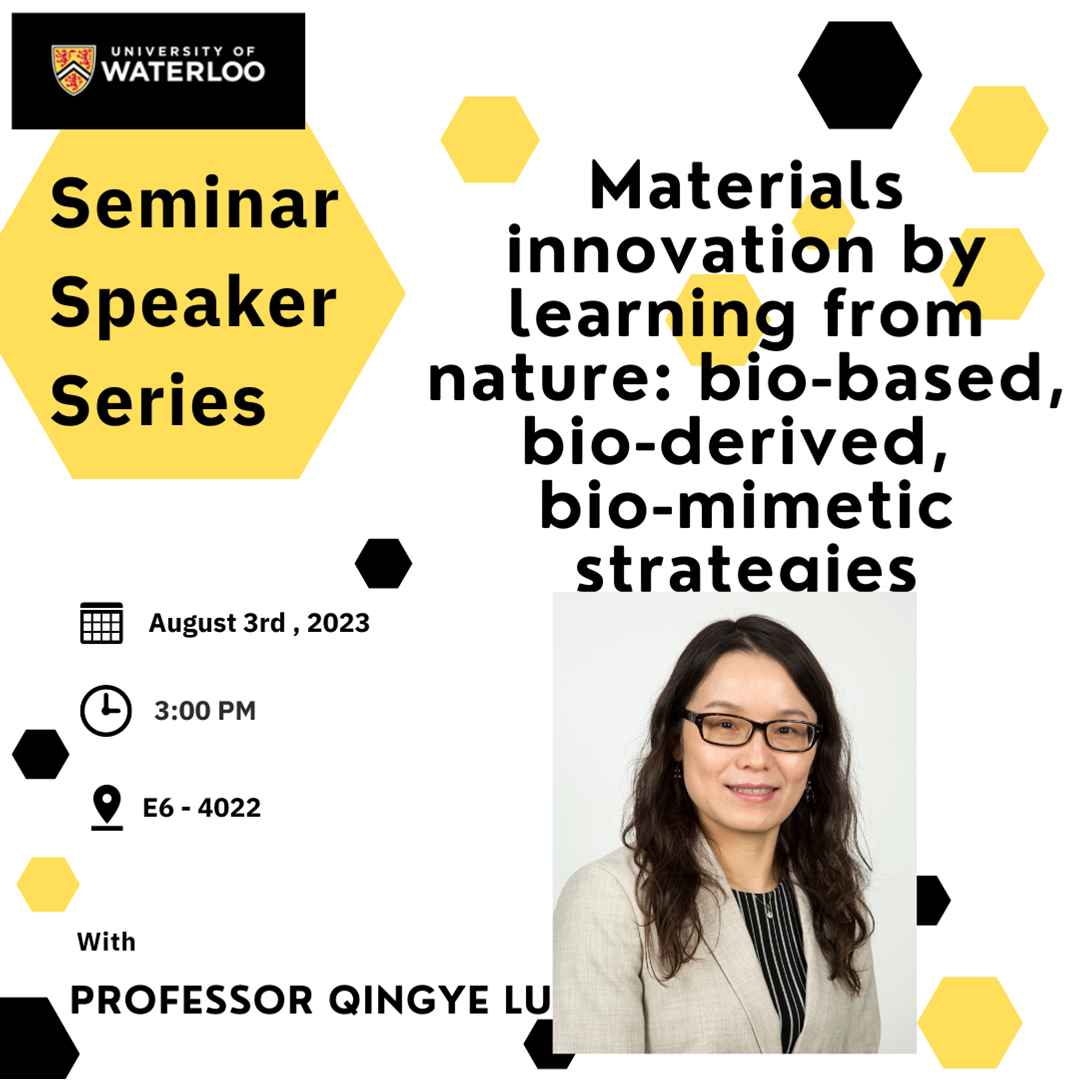
May 31, 2023
Congratulations to Amber Chen for successfully defending her MS thesis "Cellulose Nanocrystal-Reinforced Nanocomposite Hydrogel Electrolyte for Supercapacitor". Amber will continue her PhD study in our group. Wish her great performance for her PhD study here.
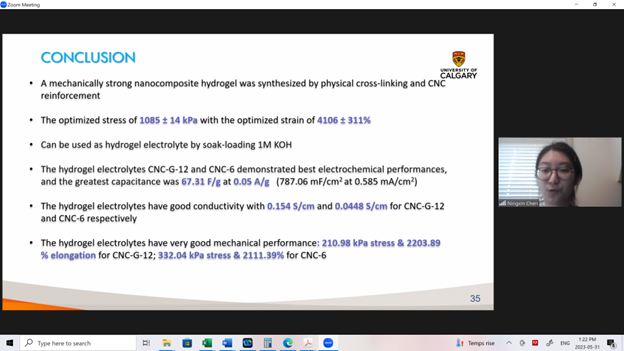
May 04, 2023
Congratulations to Mehadi and co-authors for the publication "Novel Nanoarchitecture of 3D ion Transfer Channel Containing Nanocomposite Solid Polymer Electrolyte Membrane Based on Holey Graphene Oxide and Chitosan Biopolymer" in Chemical Engineering Journal, 2023, 466, 143159.
Abstract: In the arena of three-dimensional (3D) nanoarchitecture, holey graphene oxide (HGO)—a class of two-dimensional (2D) graphene oxide porous nanosheet, has emerged as a promising choice of additive material to design advanced 3D nanocomposite for energy and environmental applications. With a facile and cost-effective solution-casting technique, we fabricated here a flexible, wearable, free-standing, and super-thin (∼0.08 mm) solid polymer electrolyte membrane (SPEM) consisting of 2D-HGO, lithium bis(trifluromethanesulfonyl)imide (LiTFSI) salt, polyvinylpyrrolidone (PVP) polymer binder, and chitosan (CH) biopolymer. SPEM exhibited impressive ionic conductivity of 2.76 × 10-3 S⋅cm−1 at room temperature (RT = 23 °C) which is comparable to liquid electrolytes. Robust mechanical property (5.87 MPa) and easy lithium-ion diffusion capability of SPEM were identified by the ultra-low activation energy (Ea) of 0.089 eV, which is one of the best values among the reported solid polymer electrolytes. Good lithium-ion transference number (tLi+= 0.76) and wide electrochemical stability window (ESW = 4.4) indicated single ion conduction and stable battery operation voltage capability of SPEM. Moreover, fast ion transfer mechanism of SPEM was proposed according to the comprehensive characterizations; mostly relating to uniform and strong interconnecting novel 3D ion transferring routes. Temperature and frequency responsive charge carrier mobility trend were also investigated with an in-depth dielectric study. Promising RT galvanostatic Li plating-stripping performance was observed at 5 mA⋅cm−2 with a hybrid symmetric cell. Using Li metal as anode, SPEM, and LiCoO2 as cathode in the full cell, a good RT specific discharge capacity of 142.8 mA⋅h⋅g−1 was achieved at 0.1 C rate.

Group Activities
2024 December

2023 Dec
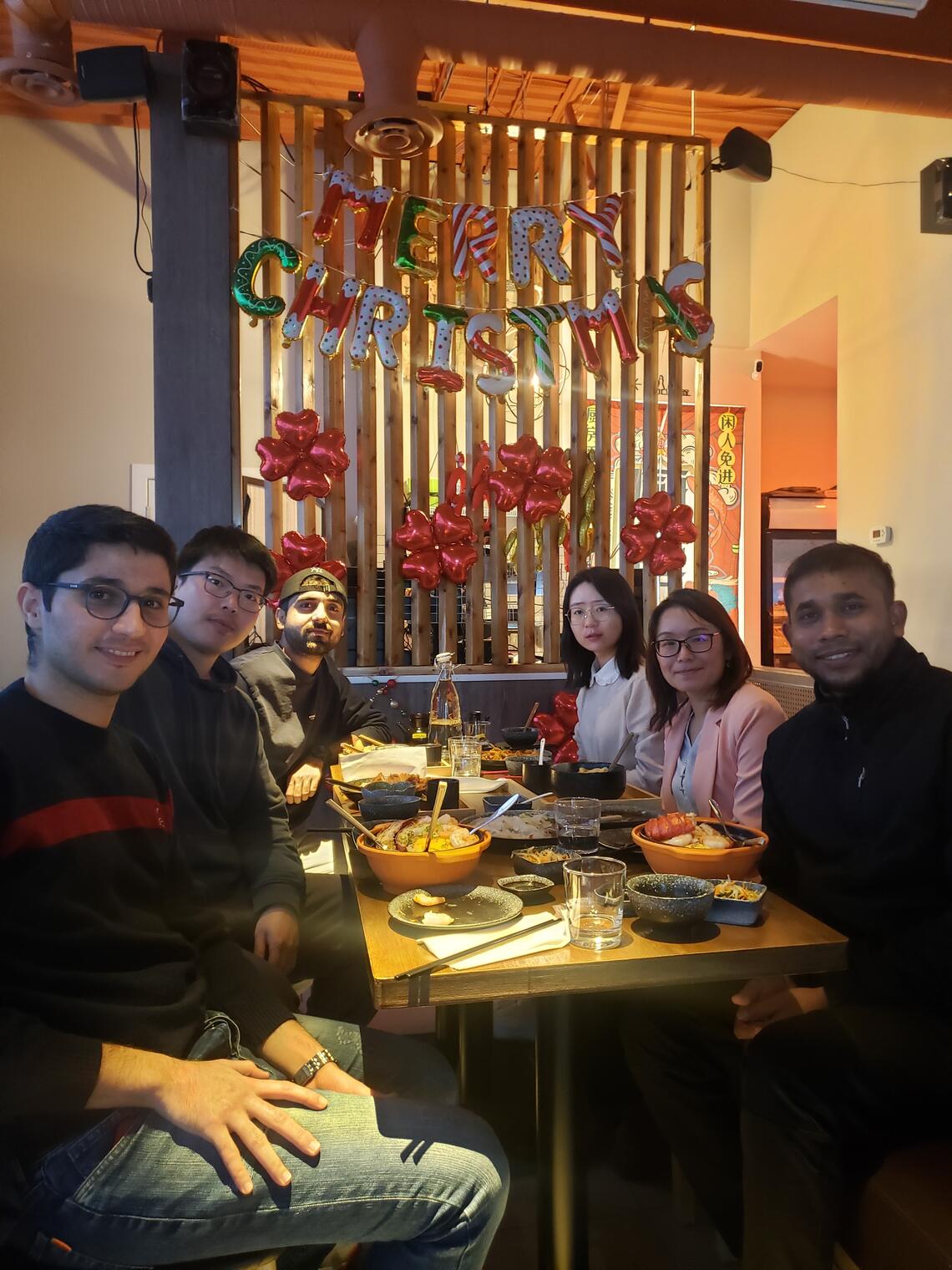
2024 July

2023 Nov

2023 August
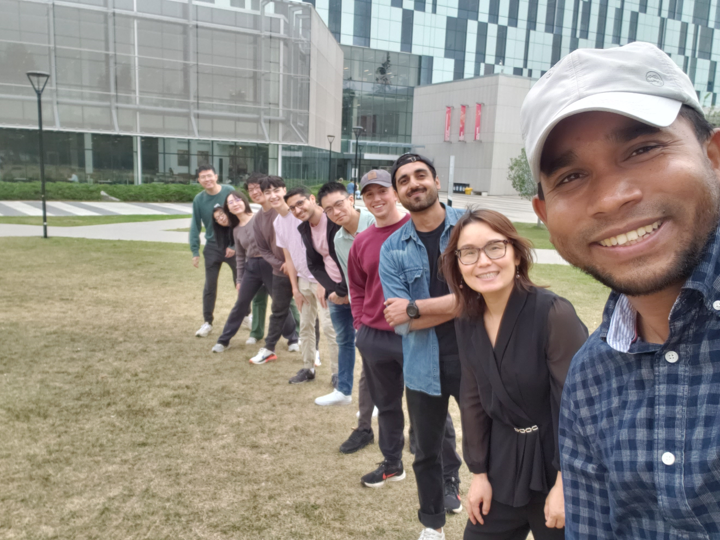
2022 August


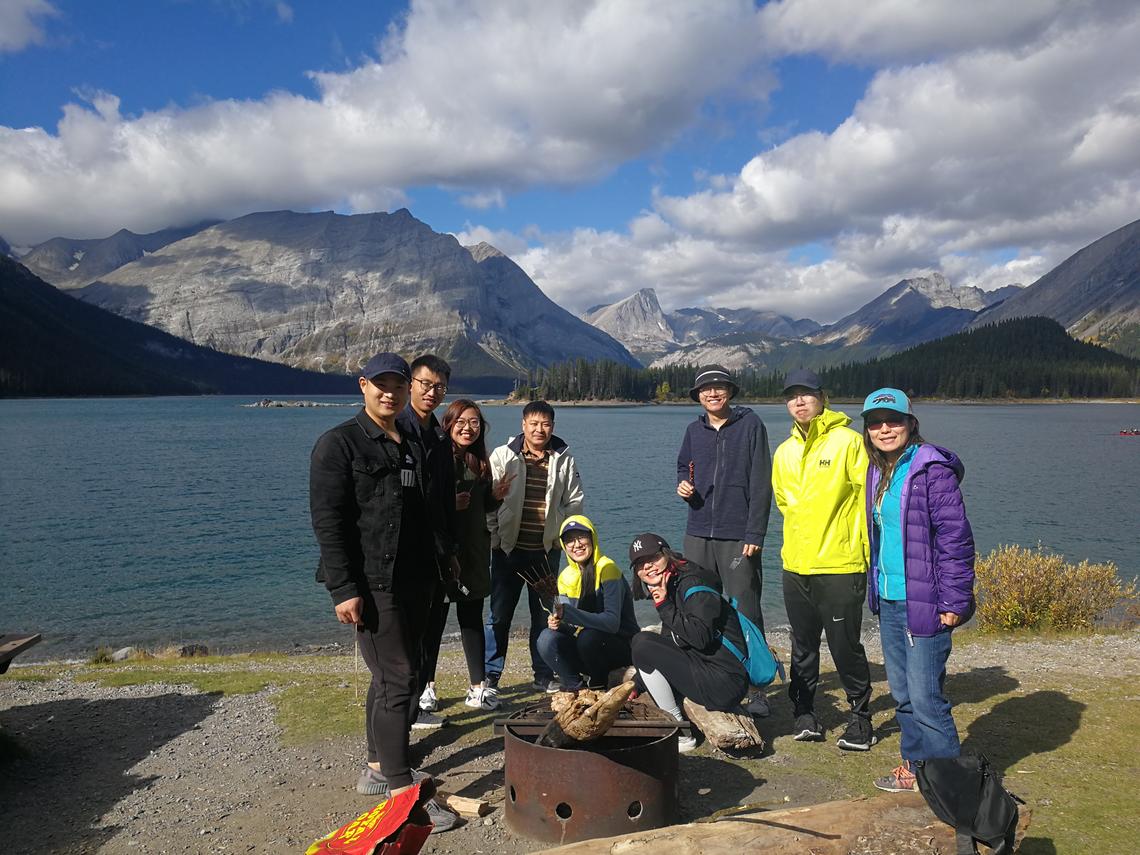
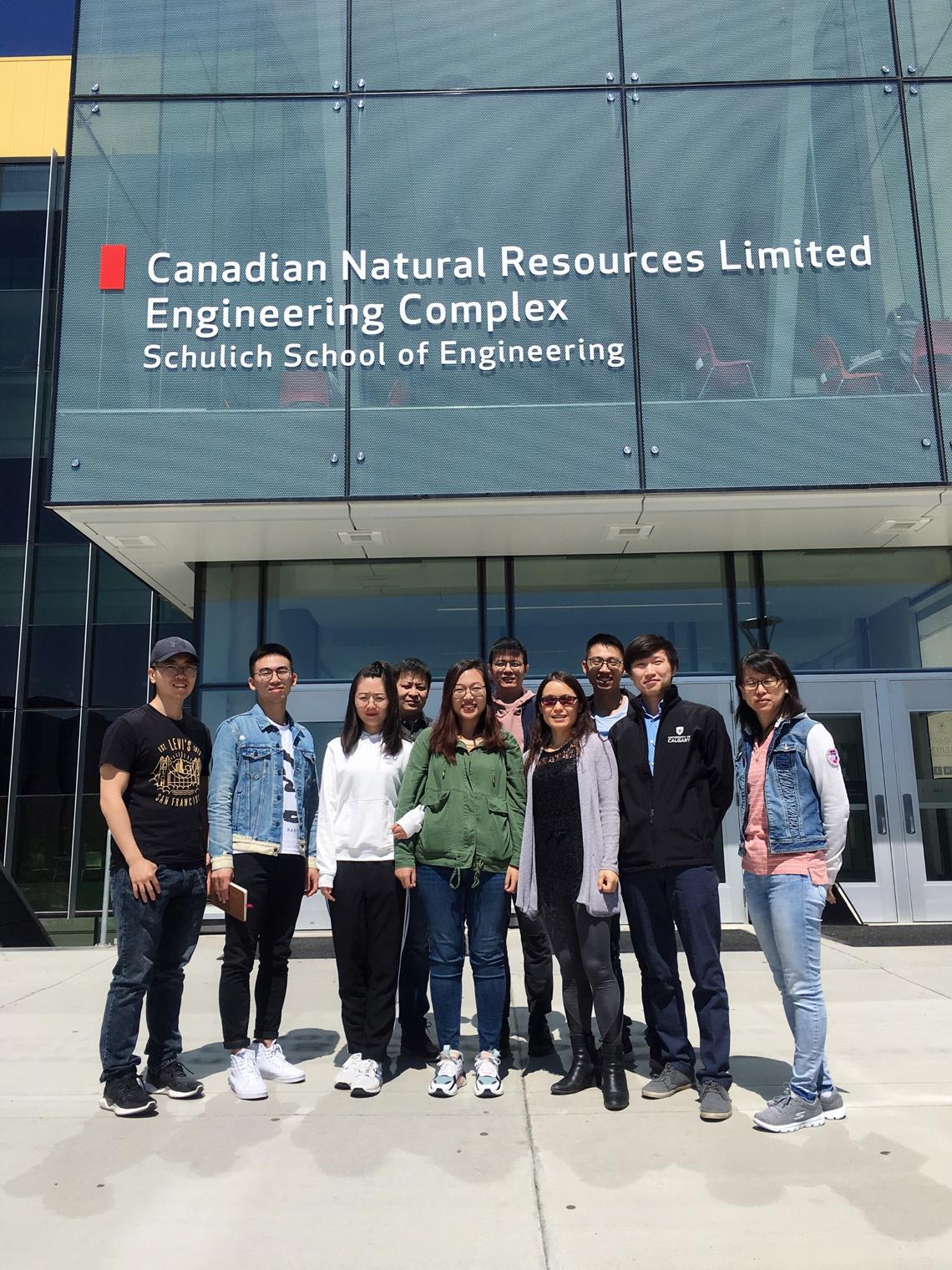
- October 2019 – Welcome to Dinesh Mishra to our group!
- September 2019 – Welcome to Mehadi Hassan and Maryam Razi to our group!
- May 2019 – Welcome to Cassie Ren, Rufan Zhou and Mingdong Yu to our group!
- January 2019 – Welcome to Kailun Zhang, Xinyao Liu and Lu Lai to our group!
- December 2018 – Welcome to Qinghong Li and Yaohua Dong to our group!
- November 2018 – Welcome to Bo Yang to our group!
- September 2018 – Welcome to Mozhu Li to our group!
- July 2018 – Welcome to Adedoyin Aderounmu to our group!
- May 2018 – Welcome to Josh Zhang and Ningxin Chen to our group!
- February 2018 – Welcome to Dr. Simone Rodrigues to our group!
- January 2018 – Welcome to Serena Liu to our group!
- December 2017 – Welcome to Dr. Li Zhang to our group!
- October 2017 –Welcome Dr. Ping Song to the group! Her project is supported by the Canada First Research Excellence Fund (CFREF)!
- September 2017 - Welcome to Yecan Wang to the group!
- September 2017 – Congratulations to Omar Man who received the Queen Elizabeth II Graduate (Master's) Scholarships September 1, 2017
- May 2017 – Welcome to Shiyu Lu to the group.
- April 2017 – Dr. Qingye (Gemma) Lu gets awarded the NSERC Discovery Grant on bio-inspired nanocomposite materials for 5 years.
- February 2017 – Dr. Qingye (Gemma) Lu attended Annual Chemical and Petroleum Engineering Graduate Student Conference and worked as Oral Presentation Judge the student oral presentation test.
- October 2016 – Dr. Qingye (Gemma) Lu attended Alberta Biomedical Engineering Conference and worked as Poster Judge for the student poster contest.
- September 2016 – Welcome to Omar Maan to the group.
- July 2016 – Dr. Qingye (Gemma) Lu joined the Department of Chemical and Petroleum Engineering at University of Calgary, Canada.
